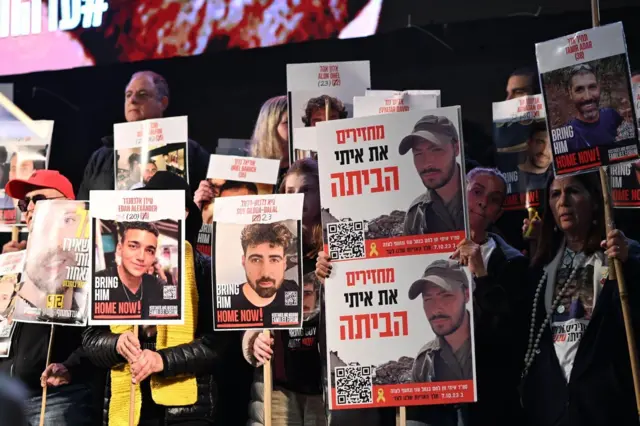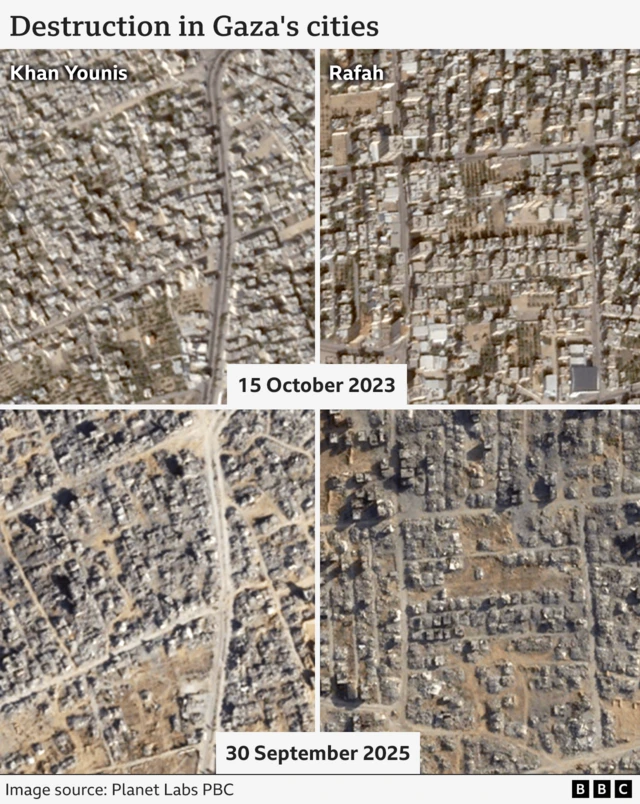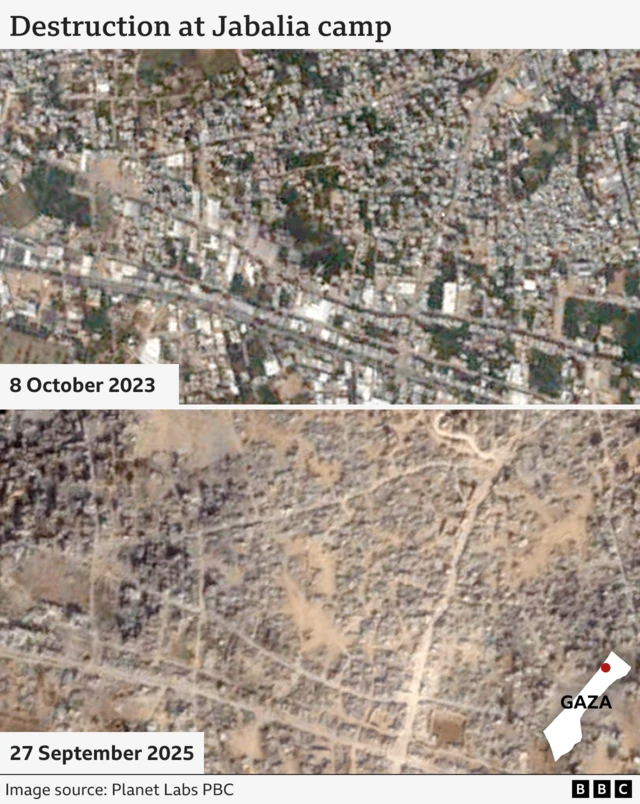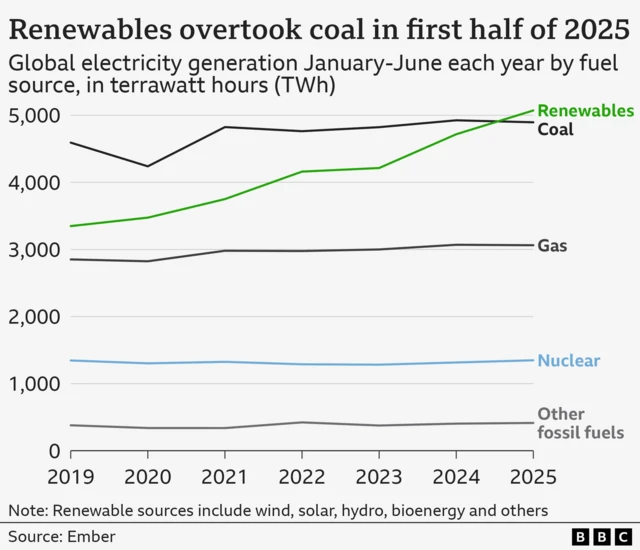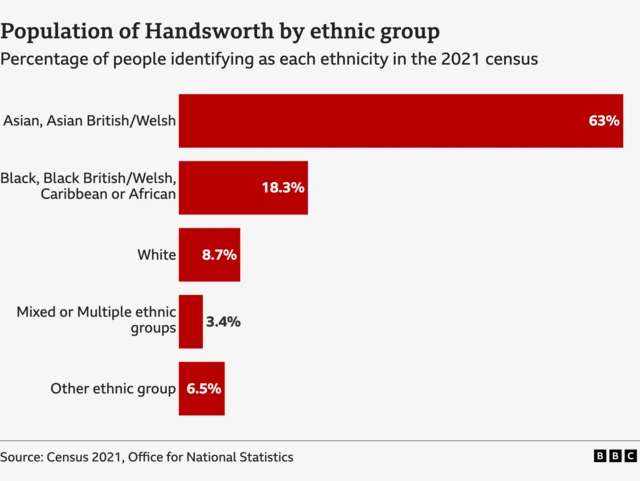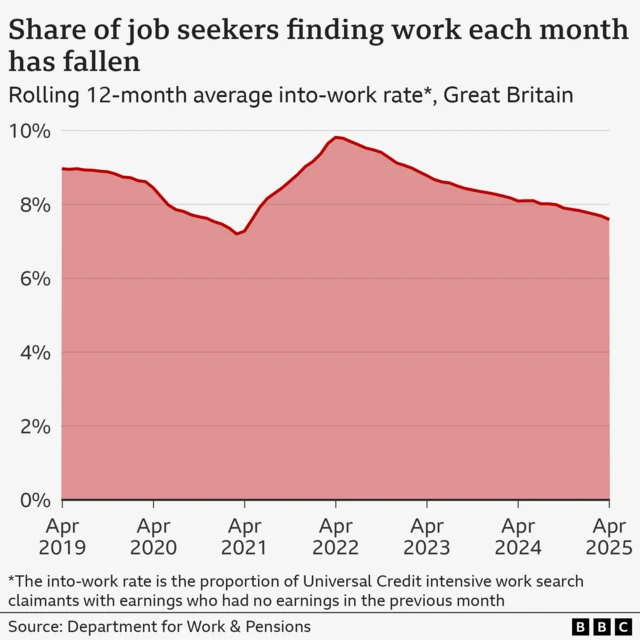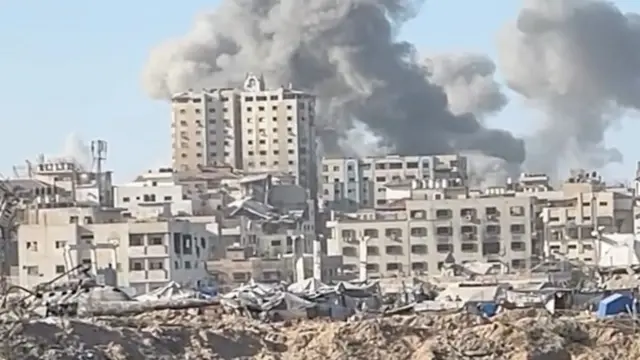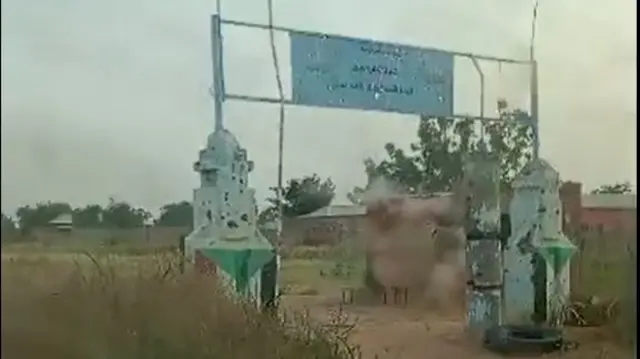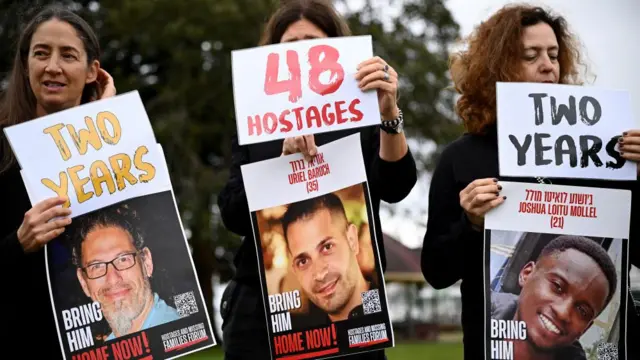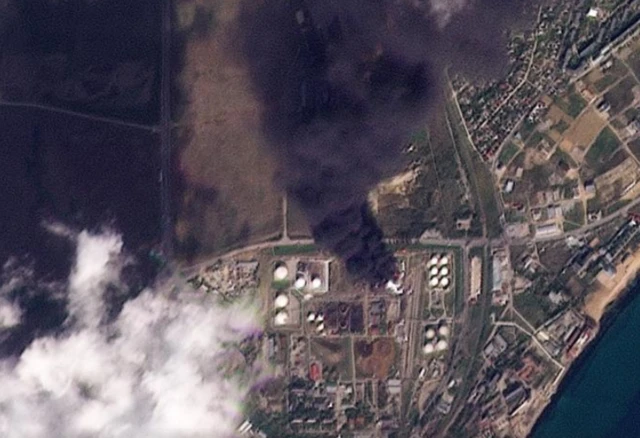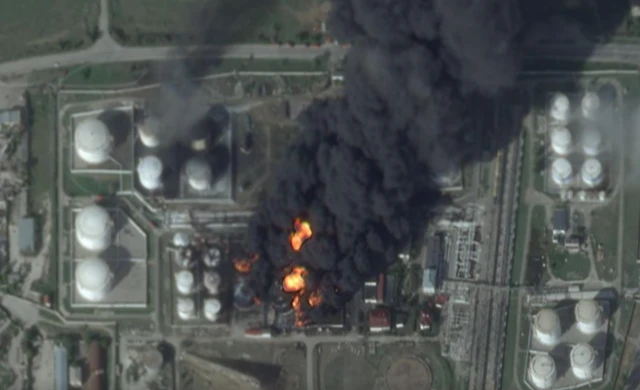How Gaza has changed after two years of warpublished at 17:26 BST 7 October
 Thomas Copeland
Thomas Copeland
BBC Verify Live journalist
We’ll be closing this live page soon, so scroll back through the feed to read what BBC Verify has been working on since this morning.
Today marks two years since Hamas attacked Israel on 7 October 2023, killing about 1,200 people and taking 251 others hostage. We’ve been reviewing satellite imagery to see how Israel’s war launched in response has brought widespread destruction to Gaza, where more than 61,000 people have been killed. The team has also explained what we know about the hostages still being held in Gaza as well as verified footage showing how Israeli strikes have continued as ceasefire talks in Egypt continue. You can read more about this story on the BBC’s main live page.
Our fact-checkers have been keeping a keen eye on Conservative Party conference. After it was revealed that shadow justice secretary Robert Jenrick called Handsworth in Birmingham “one of the worst-integrated places“ he had ever been, we’ve looked into the ethnic make-up of the area. The team has also assessed if Conservative leader Kemi Badenoch was right to say that her party has raised more money than Labour, the Lib Dems and Reform UK.
Yesterday we reported that the largest oil-processing facility in Russian-occupied Crimea had been targeted by Ukrainian drones and today we brought you the latest satellite images showing a huge plume of smoke rising from a group of fuel tanks at the depot.
And we’ve also unpacked data which shows the average proportion of benefits claimants successfully finding work has continued to fall.
BBC Verify Live will be back tomorrow morning. We hope you’ll join us then.


